“Champ Video”: New Photos, New Look
Posted by: Loren Coleman on June 11th, 2009
It is time to revisit the Eric Olsen footage of “something” in Lake Champlain. What’s been happening?
The now-elusive Eric Olsen (pictured above) has refused to give any media interviews after the one and only one he granted to the Burlington Free Press. The ridicule curtain crashed down too quickly for him. He told friends he was tired of being called a “nutjob” because people said he saw the “champmonster,” and due to the fact that “trolls” were bothering him.
Why won’t an eyewitness run and hide, indeed, when this kind of buckshot is coming his way?
“Perhaps he chose to edit out the last seconds of the sequence, when we could all see if it was indeed a deer climbing ashore….The monster looks exactly like a swimming deer.” ~ Ben Radford, “America’s Loch Ness Monster? Or a Swimming Deer?” Live Science, June 5, 2009.
Yes, we all have had a bit of a break and taken a couple distracting sidetreks. But sometimes, for the important investigations, it is best to stay on topic. Despite the quick answers by a few that what was captured on the cellphone camera of the Burlington resident was nothing more than a “deer” or a “moose calf,” those explanations seem too shallow, no pun intended.
In Joe Nickell’s blog, which he entitles “Atheist News And Views,” and says his writings are “posted by god,” all, I’m sure, to raise some folks’ blood pressures, he pens, under “‘Champ’ Sighting Solved?” my unqualified statement from the press without looking at the corrections/clarifications I made here. It is interesting how skeptics use statements in blogs when they want to, and employ incorrect media quotes when they wish to short shift investigators at other times. At least Radford includes a link to one of my blog comments so people can look it up themselves. Nickell does not.
Then Nickell goes on and writes:
“I told the Associated Press my best guess was that the animal was a moose calf….Ellen Marsden, a biology professor at the University of Vermont, concluded likewise. She discounted the seal hypothesis, observing that a seal does not swim with its back out of the water. She thought the video probably did depict a young moose, “swimming as if something was seriously wrong” (Free Press, June 3, 2009).”
Of course, having one “skeptic” quote an “authority” as saying that seals don’t swim with their backs out of the water is a rather scary situation, as well. Deer, moose, tree trunk. As usual, even the debunkers can’t agree on how to debunk a piece of evidence that gives the slippery slope a whole new meaning.
While I readily admit I don’t find the Olsen video ~ yet ~ to be a hoax, a tree trunk or some of the other silly answers, I don’t know what it is. There seems to be something animate that is unexplained, unidentified, and certainly, for now, mysterious, which is visible in this footage.
How about a new look at the images in a new way?
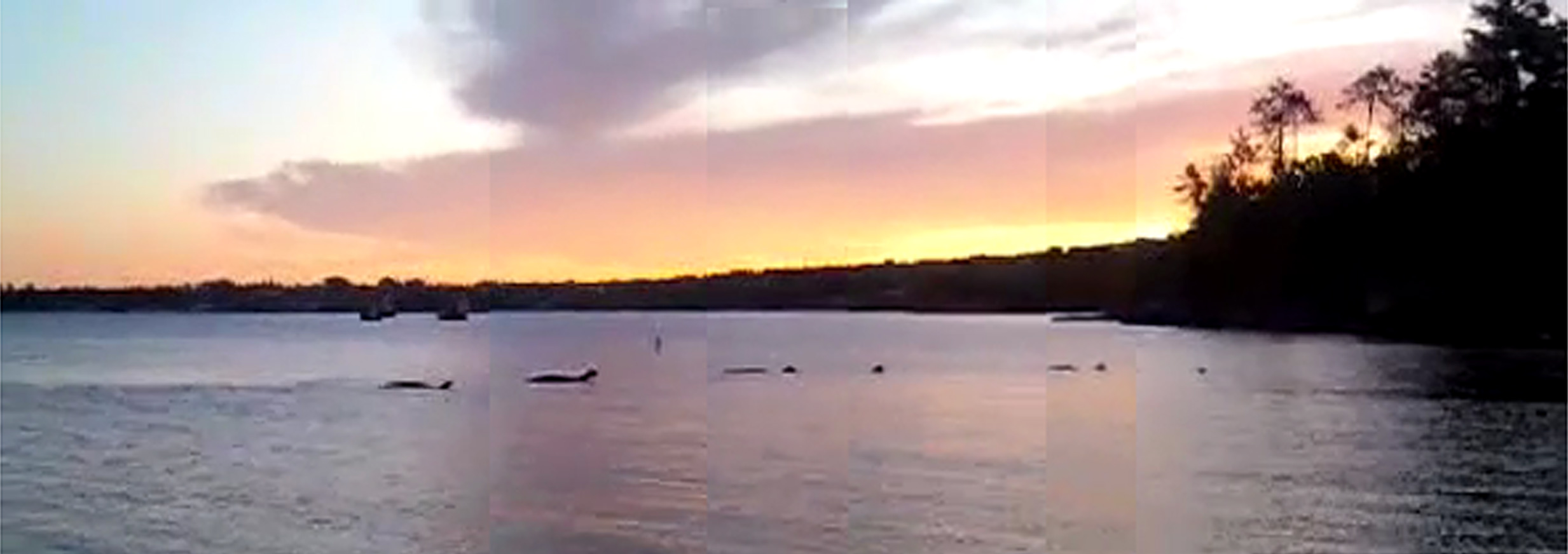
This is a comprehensive patchwork of the object shown in the Olsen moving images taken on May 31, 2009, at Lake Champlain. You can see here, for the first time, what the object looks like against a matched shoreline/background. The progression of the object in the water is intriguing in this view. (Click on the image to enlarge the montage. Appreciation to Yakcam, who is a special effects and prop cinema specialist.)
Next, view again the following map, to orient you.
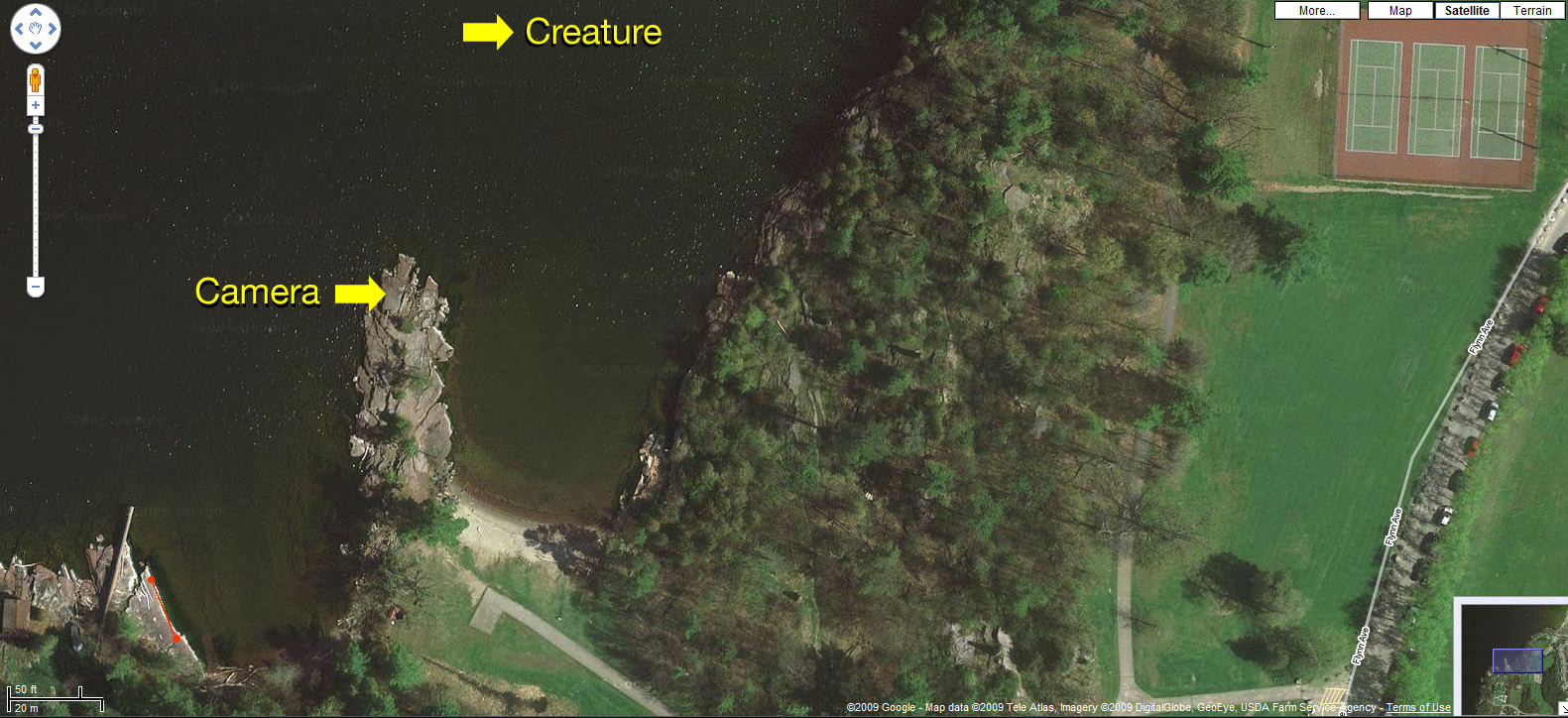
For reference, recall that the tennis court in this shot is 36 ft x 78 ft.
How about looking at this scene without the “lake cryptid”, to look for the landmarks and how the light plays there?
It turns out that Eric Olsen visited this same area before, as he liked to take images (moving and still ones) of the sunrises and sunsets there. Eleven days before his now-famed footage, Eric Olsen captured this scene from this same spot on May 20th, for example (second video is a lightened version by John Donald Carlucci).
Furthermore, on the very day of the footage, on May 31, 2009, Olsen posted on the Internet straightforward photographs of the scene (without a “something” or “Champ” in the water, of course). His phonecam photography, actually, is quite good, considering the technology he was working with for these shots.
Compare these to the raw footage by Olsen and to E. Shepard’s photos of the same site (one of where Eric Olsen was standing, and the other in the direction of the object in the water):
Next, let me try to line up all the enhancements, frame captures, and stills published in the last few days in chronological order of this object traveling from left to right.
Deconstructing the footage itself, even more than it has been broken down to date, would be good.
As a reminder, here it is again. Will the Oslen footage of “Champ” become the lake monster equivalent to the Patterson-Gimlin film of a “Bigfoot”?
The following stabilized version of the Eric Olsen-obtained video was produced by John Donald Carlucci of Darke Media.
This footage needs to remain in focus, for further analyses, even if the media has lost interest.
Doesn’t it feel as if we are experiencing a nine day wonder, with regard to the seemingly fleeting interest in the “Champ video”?
A “nine day wonder” is an idiom referring to something that generates interest for a limited time (e.g. a week and two days) and is then abandoned.
The origin of this phrase is usually tied to the nine-day reign of Lady Jane Grey (1537-1554) as Queen of England. Lady Jane Grey was reluctant to take the throne of England because she was only 15 years old and she held unpopular Protestant beliefs. Her reluctance was well-founded; the young Queen relinquished the crown after just 9 days, plead guilty to treason, and was eventually beheaded.
What seems mildly strange to me is that despite the existence of a video that would seem to have been shown on television news programs over a few days, except in New England, the footage has not been re-played as much as I expected. Perhaps it is because Eric Olsen has refused interviews? Or is it because the David Carradine mystery death and Holocaust Museum shooting are fulfilling “silly season” and “hot death story” needs for the media?
But compared to “that” story from last summer that was full of bluffs, teases, and, ultimately, a costume frozen in an ice chest, it is rather remarkable to see this “Champ video” story disappear from the media radar so quickly.
There are things that still need to be figured out about this video, even if only a few of us wish to keep looking at it.
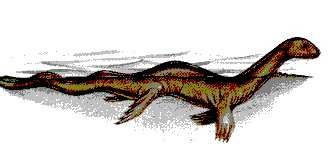
Bernard Heuvelmans’ Super-Otter (above) compared to an image from Eric Olsen’s new footage (below).
Thanks for enhancements and photos from Yakcam, Impossible Visits, Sean Viloria, John Donald Carlucci, BoyInTheMachine, Jason Ficks, and, of course, Eric Olsen.

Your assistance is still important in supporting the museum. Please…
Thank You.
This museum is not a 501(c)3. It is a privately supported not-for-profit venture. Your donations are critical.
About Loren Coleman
Loren Coleman is one of the world’s leading cryptozoologists, some say “the” leading living cryptozoologist. Certainly, he is acknowledged as the current living American researcher and writer who has most popularized cryptozoology in the late 20th and early 21st centuries.
Starting his fieldwork and investigations in 1960, after traveling and trekking extensively in pursuit of cryptozoological mysteries, Coleman began writing to share his experiences in 1969. An honorary member of Ivan T. Sanderson’s Society for the Investigation of the Unexplained in the 1970s, Coleman has been bestowed with similar honorary memberships of the North Idaho College Cryptozoology Club in 1983, and in subsequent years, that of the British Columbia Scientific Cryptozoology Club, CryptoSafari International, and other international organizations. He was also a Life Member and Benefactor of the International Society of Cryptozoology (now-defunct).
Loren Coleman’s daily blog, as a member of the Cryptomundo Team, served as an ongoing avenue of communication for the ever-growing body of cryptozoo news from 2005 through 2013. He returned as an infrequent contributor beginning Halloween week of 2015.
Coleman is the founder in 2003, and current director of the International Cryptozoology Museum in Portland, Maine.









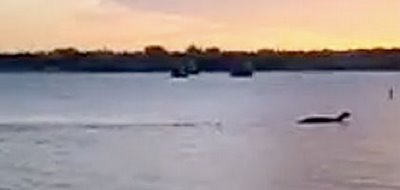
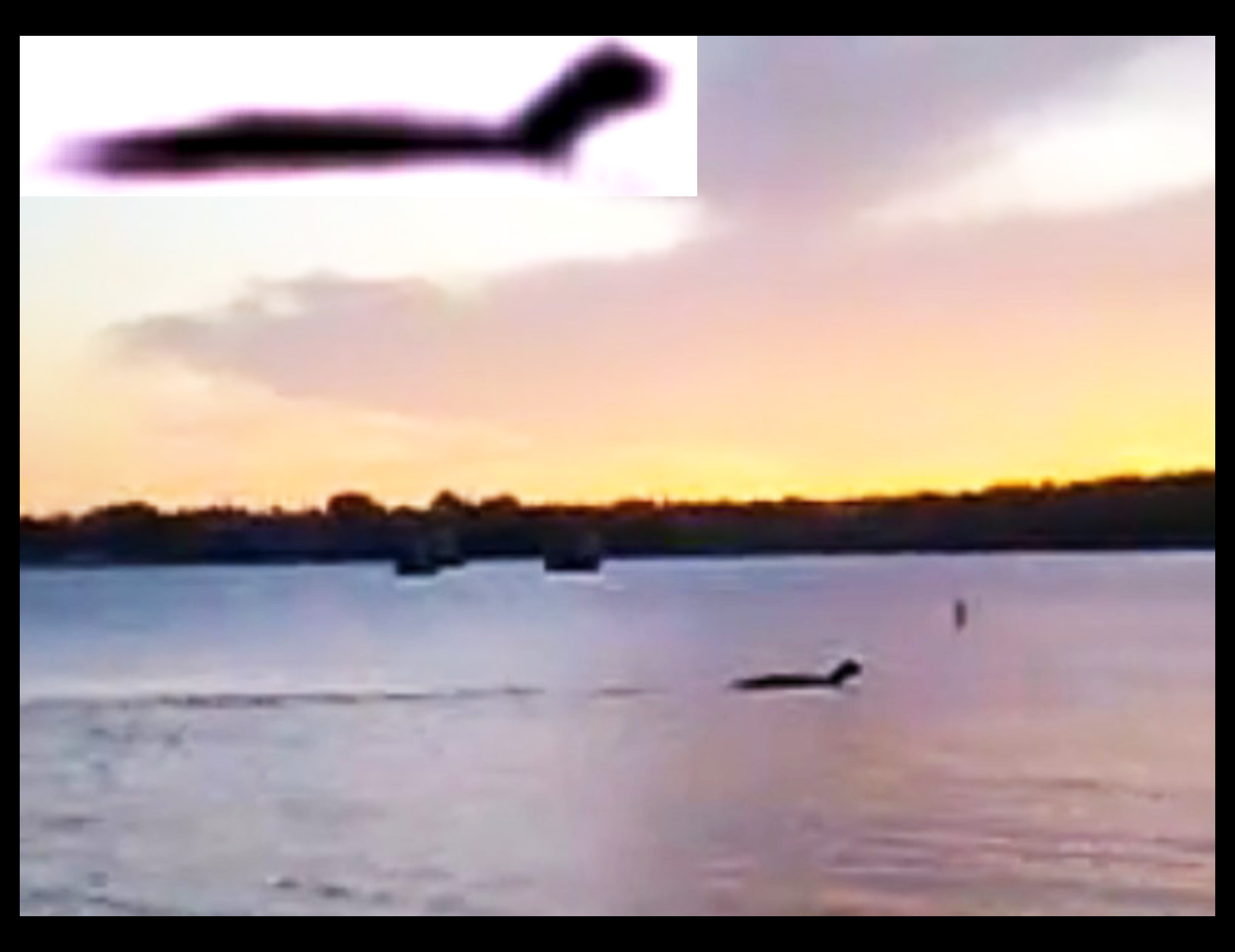
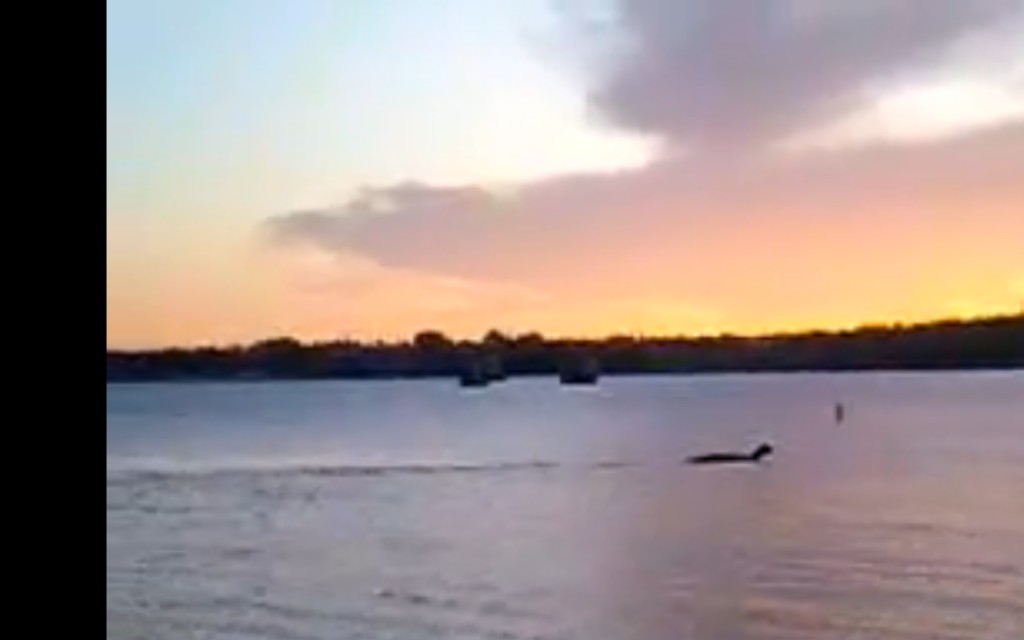

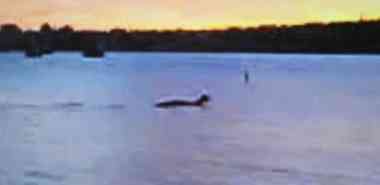
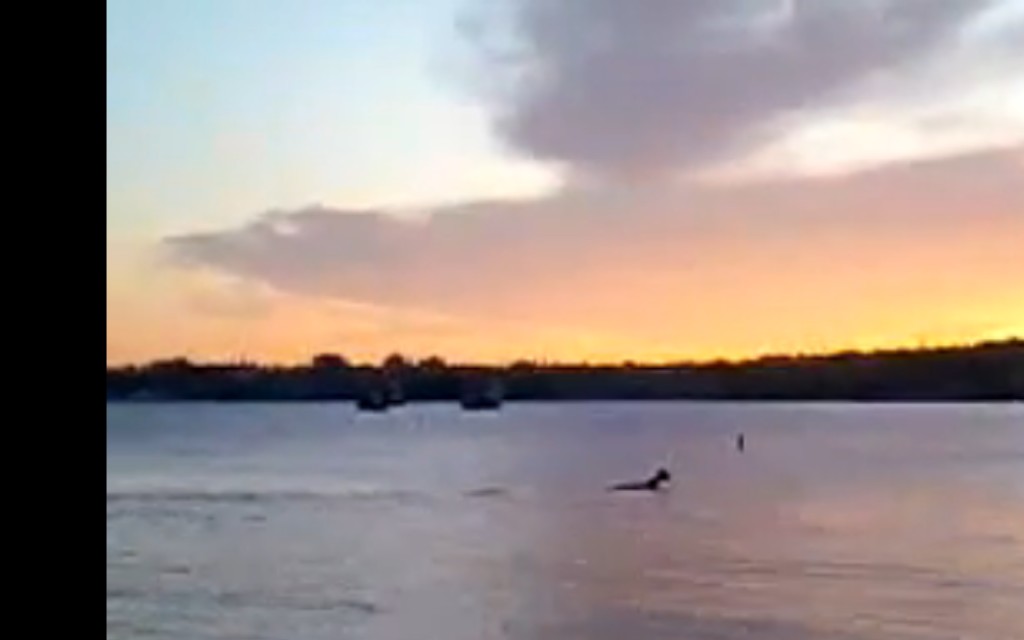
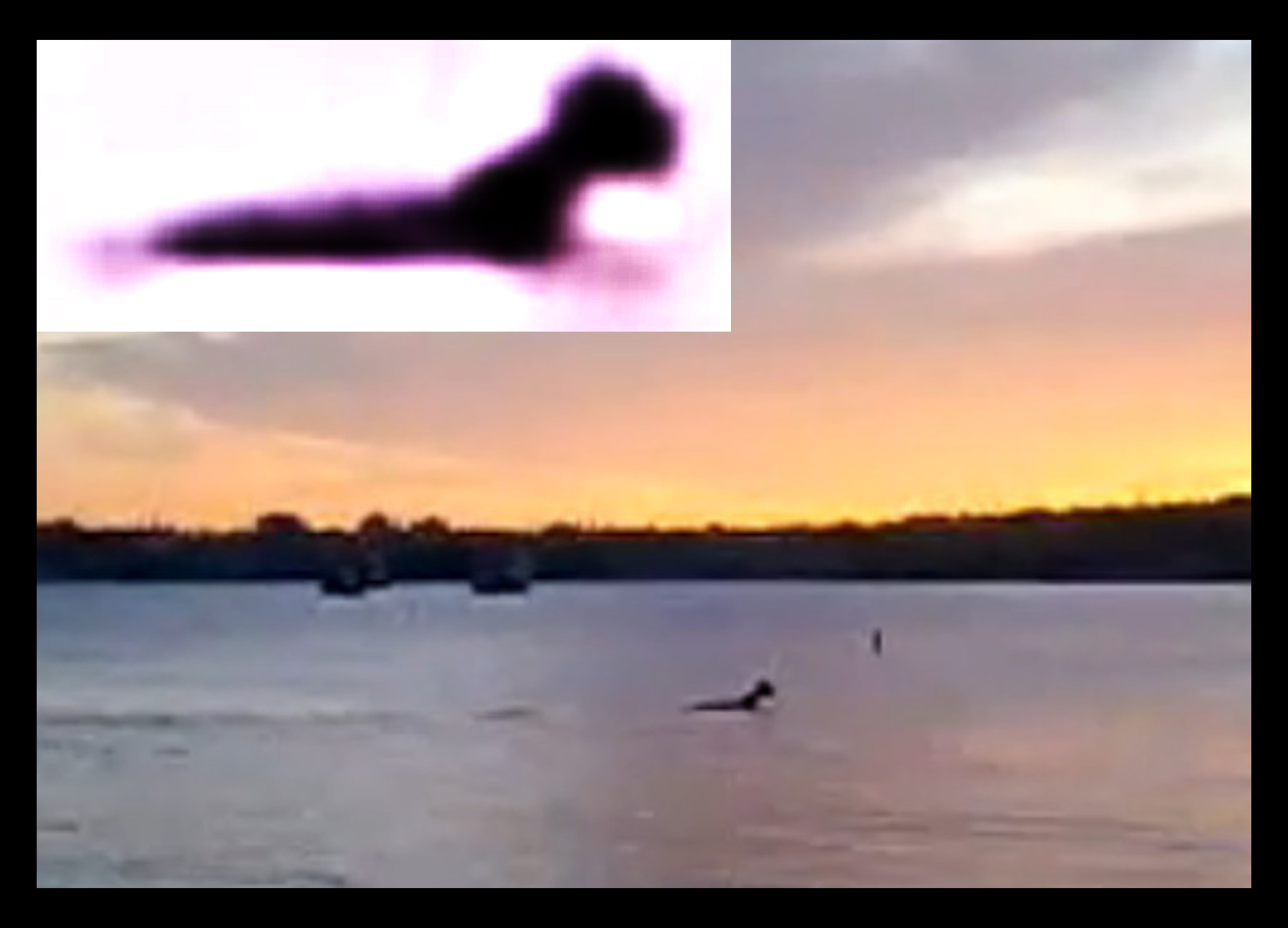
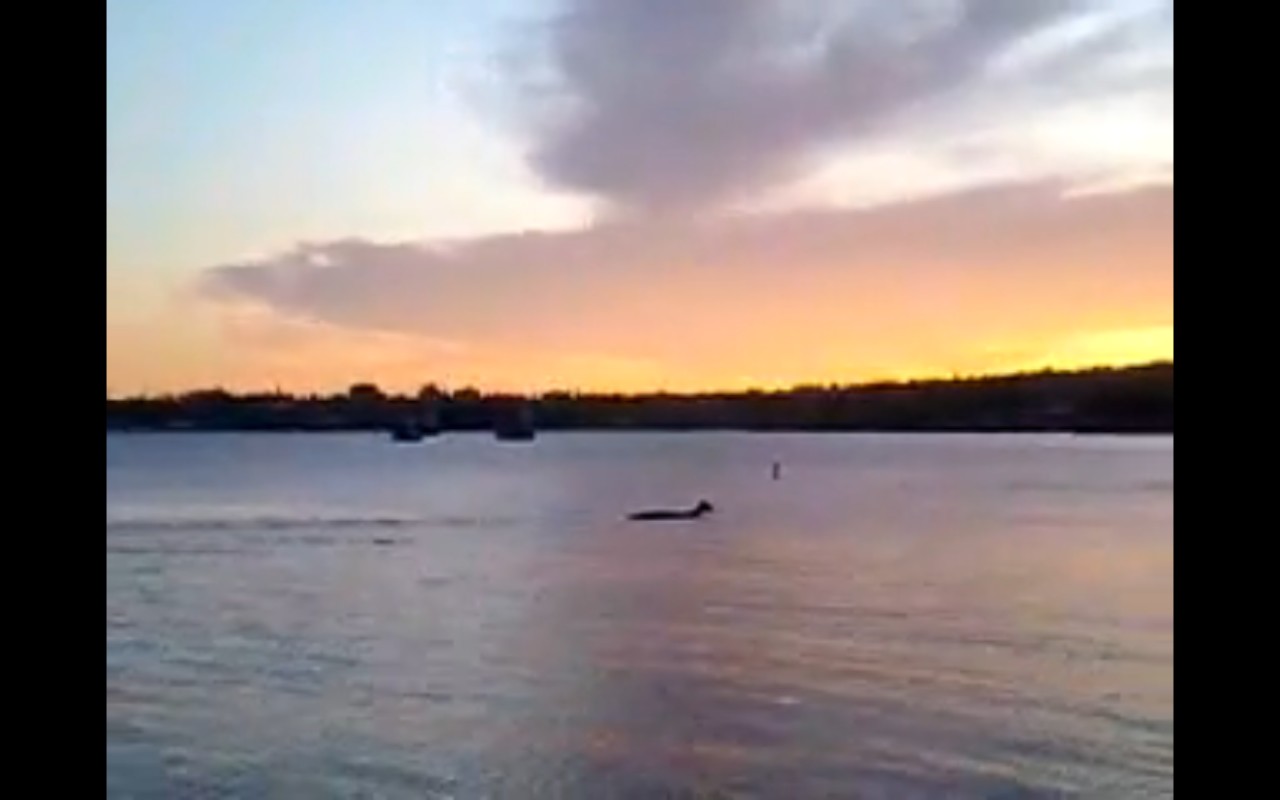
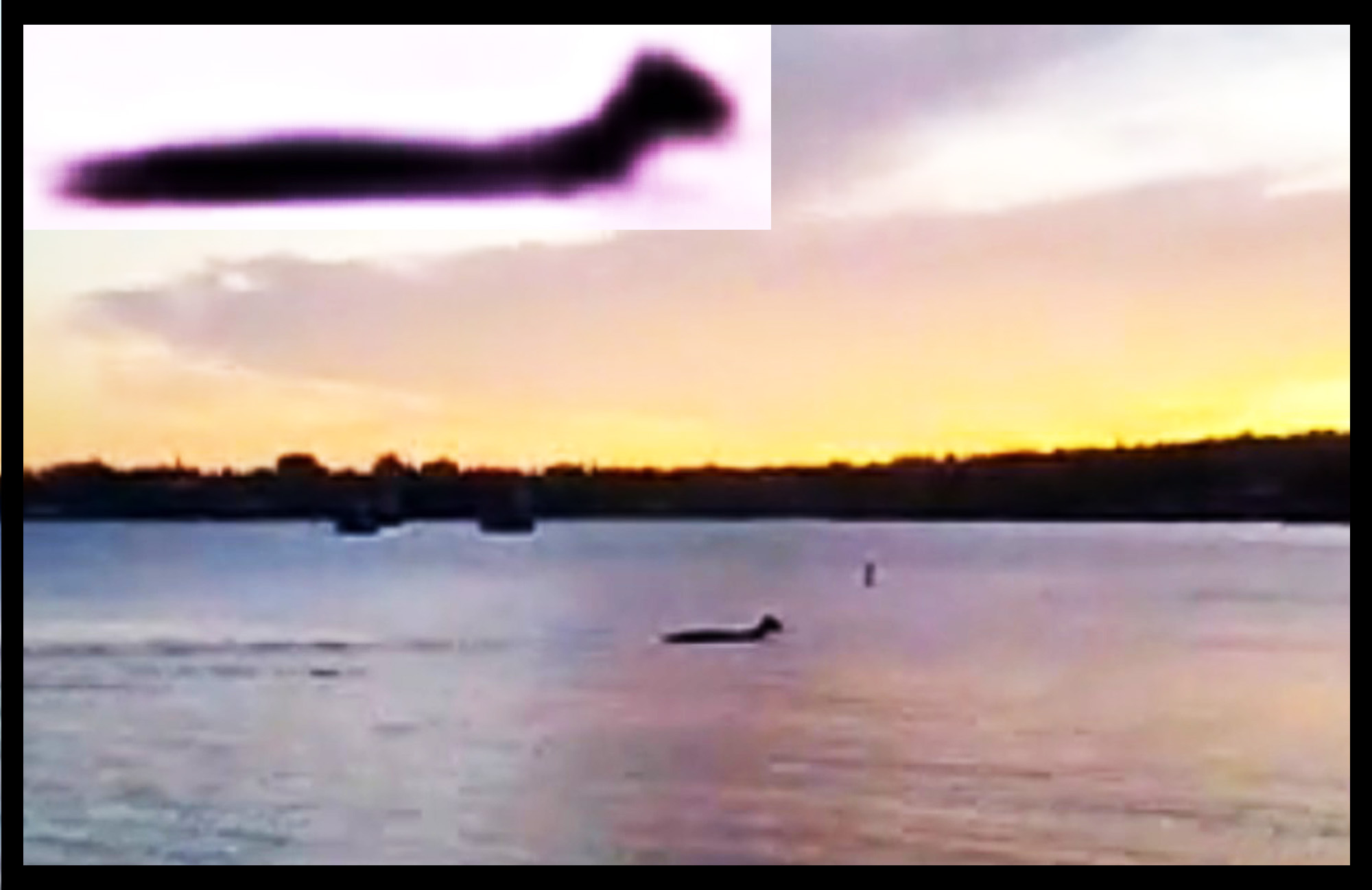









I still haven’t been able to draw any conclusions from the videos or still shots, I’m absolutely miffed by this one. I’ve considered all the suggestions of deer, moose, dog, log, etc and can’t come to grips with any of those. The seal theory makes some sense after viewing the animal’s head so many times, but the behaviour in the water throws me off that one.
One thing that does bother me though are the allegations of Olsen fraudulently editing out the last bit of footage. I’ve seen several cell phones with video capabilities, and even digital camera’s ($80-$120.00 range) that are only capable of storing 10-15 seconds of video, so the fact that this guy is taking a brow beating over the footage ending is a pretty harsh, without at least knowing what model phone he was using and the exact specs of the phone to determine exactly how long that particular phone will record video. And if that was known and his footage was far shorter than what is common with that model phone, then I could see the allegations, but without that evidence how can anyone say?
I totally agree with you, Loren.
And I’ll stand by my feeling that whatever this is, it is NOT a moose.
The body is just too elongated for that. The head does not look right. Deer is possible, but it still looks strange and elongated as well.
I’m actually considering what some people are saying here—that it is a “snapping turtle.” Could be. The body once again looks too elongated for that. I had somebody who works with turltes say the same thing. Too big, too.
I still think we need to measure the distance between the place where Olsen was standing and the approximate place in the place in the water where the “whatsit” was.
I have no idea what it is ultimately. But this story definitely bears investigating.
What the media did does not surprise me. Ambiguity does not sit well with them.
Also thepossiblity that there might be “something out there” that is from the “vertical,” not “horizontal” world.
“I told the Associated Press my best guess was that the animal was a moose calf….Ellen Marsden, a biology professor at the University of Vermont, concluded likewise. She discounted the seal hypothesis, observing that a seal does not swim with its back out of the water. She thought the video probably did depict a young moose, “swimming as if something was seriously wrong” ….”
Nickell made that up out of whole cloth. That’s very likely. Much likelier than that it’s a moose or a deer.
Alternative hypothesis: people will do anythiing to convince themselves that everything’s OK and they can go back to sleep. That’s what Marsden is doing. Her conclusion is absolutely…well let’s just say I’m not taking any biology questions to her. “When your livelihood depends on your not seeing something it will be awfully hard to make you see it.” THAT’s a proposition to bet on.
Whatever that is, it’s in no trouble. And it’s not a deer and it’s not a moose.
Very thoughtful comments, Loren. Those of you professionals in the field of science who have dared to examine these unkown phenomena–yourself, Grover Krantz, Jeff Meldrum–have endured perpetual hell through the years and deserve great thanks. I feel very bad for Mr. Olsen.
I, too, am undecided as to what this clip depicts, but as I said in a previous post on this site, the deer/moose/etc. explanation for this clip so breezily tossed off by the Nickells and Radfords cannot adequately account for the second hump that appears at 1:31, 136-8, and 1:44, a hump that is clearly following the head and body, but at a considerable distance behind.
Not a moose, Big honking turtle perhaps; after all if you pop a pic on here of the hypothetical super otter then a huge turtle isn’t beyound the realm of possibility. A seal is another option.
Does anyone know how far from the point the picture was taken the bouy is? I’d like to see it marked on the satelite photo.
Another question I have is what is the location of the boats/barges (can’t tell for sure) and the small jut of land on the right on the satelite map. It would be helpful to see bearing lines on the satelite map from the penisula he took the picture to these points.
I hope you will bear with me with the following thoughts. Only reason I am repeating a few of the things I said in the original post is to make them clearer. I wish more people would do that as short answers like “dog” and “moose” show at the very least a lack of imagination and willingness to share thoughts. Kudos to all who have backed their ideas whatever they be.
I too disagree with the moose/deer/calf/dog/long-lost-cousin swimming idea primarily due to shape/size and movement pattern. Definitely not a tired animal in distress as they always become a lot more sloppy and panicky in their movements as their strength is drained and this thing certainly is NOT doing that. Land mammals that cross a body of water will not linger as this one does (with the exception of otters, beavers and such which are essentially marine-going animals) but will make as strait a line as possible. This one seems to be rather casual and also slightly changes course to veer a bit to it’s left.
Now for the reasons I do not believe it to be a log/branch. First of all it’s speed would have been equivalent or close to that of the surrounding water if it was naturally occurring, it is not. If an object is moved by currents it does not slow down and speed up but rather follows the speed of said currents. Also I do not believe it’s movement is consistent to that of a log/branch being pulled by a string due to its shape. It would be rather difficult to maintain the “head” branch out of the water, make it sink a bit and then come back out. The taller protrusion would have a tendency to roll over and be at the bottom rather that stick out (unless off course one chose a log specifically shaped to allow this). I think most people would try and make something rather than find a natural something-or-other that will do the job. Back to movement now. It seems to me more consistent to something pushing itself (or being pushed) rather than being pulled. If you pull something in the water, especially if it has a protrusion, it will tend to dive, submerging it’s head. Thus if not self propelled, then it pushed. If it was pushed we should see some form of second wake or water disturbance, which we do not. So, unless an object was specifically designed for this, I tend to believe it is alive rather than inanimate.
I will not go as far as identifying it because I cannot. I will however agree it reminds me more of a seal or otter-like creature, assuming it is a known one.
DWA- Do you think this instance might qualify as the witness being ridiculed? I seem to recall at least one self-styled skeptic claiming such things were rare to nonexistent.
It seems to me that there are only a handful of reasonable possibilities this object could be–including a hoax but let’s set the latter aside for the moment.
We know the time of day, location, water surface conditions, the lighting conditions, equipment, and approximate distance. If someone thinks its a young moose, drop a young moose in the water or even some other candidate–film it swimming from the same angle with the same equipment, and under similar surface and lighting conditions and vuala! Maybe it can be shown its a young moose.
Right now the object looks like something swimming using natural behaviors we expect from an animal that swims at the surface. So natural in fact that many people think they can identify the object from one blurry video.
Will the Oslen footage of “Champ” become the lake monster equivalent to the Patterson-Gimlin film of a “Bigfoot”? Not yet–but it seems a good candidate. The Oslen footage contains the most information of any champ video (or lake monster video for that matter) I am aware of. It supports many eye witness accounts. The object looks like its real, alive and integrated with it’s environment. And the subject got away–clean. What seems to be missing is someone going out to the site while its fresh and taking measurements.
On topic but relating to the video. I find the first few frames to be very interesting. At the very beginning of the video when the camera first pans towards the object–it looks as if it is oriented either facing towards or directly away from the observer. I get the impression that the object’s width broadens where it contacts the surface of the water as the base appears on both sides of the ‘head/neck’–almost like it has shoulders or a relatively wide girth of body (about 5 seconds into the video). At no other point in the video is this type of profile available. If it is an animal swimming to the shore–then it seems to have changed direction at this point to a full profile.
If this is a hoax, then it is very well executed. The quality is good for a cellphone video, This video does fall outside the “blob” category, it’s just too bad there was no way to zoom in on the swimming object. I’ve seen all kinds of aquatic, semi-aquatic and land animals swimming during my career. Like Kitsos said above, this reminds me more of a seal or otter-like creature, not a moose, deer or dog. I don’t know what it is or isn’t for sure, but I would say it is definitely an animate object and not a log.
Will the Oslen footage of “Champ” become the lake monster equivalent to the Patterson-Gimlin film of a “Bigfoot”? Not yet–but it seems a good candidate.
No way. Whether the Patterson-Gimlin film is a man in a suit or a real Bigfoot, it is clearly something alive. The Olson video shows something that moves in a stiff way that is arguably inanimate. It would be a heck of a lot easier to put together a remote control model to do everything in this video than it would be to reproduce the Patterson-Gimlin film.
This video certainly is intriguing. The identity of whatever we are seeing is not at all an easy call to make. Some things I find compelling about this video.
In my opinion, this is almost certainly not an inanimate object. I would think this would be apparent to anyone looking carefully, but one clue is in the head area. Even with the poor level of detail we are dealing with, you’ll notice that the blob of the head “changes shape,” seeming to elongate and shorten. Now of course I don’t think the head is reallychanging shape (unless it is a large invertebrate like a slug), but it is indicative of the subject moving its head in relation to its body, looking around so to speak. Not typical behavior for a log. You can also see as it submerges at one point that its head sort of swivels a bit to stay level as its body changes angles and goes under. Also not particularly log-like behavior.
There is also a seemingly smooth, controlled movement and slight undulations, which to gives a strong indication of muscle movement.
Whatever it is, I have my doubts that it is a log or static artificial construct.
I also have problems with the deer theory for many of the same reasons that have already been stated by myself and others here. This thing simply does not swim like a deer. Deer keep their heads above water and not really a significant portion of their backs in water of the alleged depth here.
The only reason a deer would submerge to the degree demonstrated in this clip is if it was on its last legs. However, in the beginning of the clip, it is clearly keeping its back well above the water, which is an indication that it is not struggling to keep afloat. An terrestrial animal in circumstances dire enough that it would dissappear almost completely underwater would be desperately trying to keep its head above water. It would likely not move along leisurely with its head and back held high only to sink out of view.
A deer would likely either swim as a deer would, with its head low, yet still above the water at all times, or we would be seeing some signs of distress before it “sinks,” of which keeping its whole rear body afloat is not.
The lack of deer ears is also telling. At no point is there any hint of these, and deer have pretty large ears for it not to be apparent in the slightest bit. Even with low resolution, I would expect to see something indicating ears at some point.
For these reasons, plus the often cited odd body dimensions and apparent “tail” (Wake? Hard to say), deer or moose seem like poor candidates in my opinion at this point.
I am familiar with all sorts of animals both in and out of the water, and I can honestly say this is a tough call. What is it? I don’t know. But I strongly suspect it is not a moose, deer, or inanimate object.
I also agree to some extent with those that have said the animal in question appears comforatble in the water. It doesn’t seem to be struggling in any easily discernible way, and from what I can see in this clip appears to be quite possibly an aquatic animal of some type.
super otter is my choice. it seems obvious. Unless seals have long bodys. 🙂 it’s great to have theories, cause we all need hope on this existance. I have my reason to believe, and you have your reasons. 🙂
One day they would be found real, even in our generation. 🙂
This is a little out there, more out there than than godzilla snapping turtles, but I keep thinking how much it looks like a capybara, especially the profile of the head. I know some people keep them as pets, one was even found in a river in France, according to wikipedia, so its not totally impossible. Extremely unlikely, but this is cryptozoology. The shape of the head just keeps bugging me, not many animals have a profile like that with a shortened blocky rostrum. Anyone else have an opinion on this idea? Just throwing it out there.
Yes, a deer or moose with it’s ears cut off would be in distress. It’s equilibrium would be way off. Maybe that’s why it prefers the water- you don’t fall over onto the hard ground or crash into trees and stuff.
After carefully watching all the videos many times, and reading all the comments in all the posts about this, I still think it’s a deer.
Ben Radford and Joe Nickell are the gifts that keep on giving. Seriously, we get it. You can ‘prove’ every unidentified animal as something other than an undiscovered animal. But I have to take issue with the deer theory. I, along with others, have made the point that it looks nothing like a deer. If it is a deer, it’s a loooonnng deer. A deer, that is in the process of drowning, yet, swims with practiced ease. It doesn’t fit.
Also, if, as Ellen Marsden states, seals don’t swim with their backs out of the water, where did the picture of the seal swimming with its back out of the water come from? Have you ever been to Sea World? Sorry. That seemed uncalled for. However, if you are going to make a statement that is ridiculous on its face, that statement should be argued against.
Ms. Marsden also says it looks like a moose in serious trouble. NO. It does not. It looks like an animal swimming comfortably in the water.
Also, I am wondering if anyone else notices that just before the camera shuts off, that it appears the creature begins to shift away from the shoreline? If that is the case, then it is most certainly not a deer, or moose, trying to get out of the water. I may be totally wrong, but that was the immediate impression I had on watching the video.
Finally, while hoaxes are far too commonplace, can we not verbally assault everyone that says they saw something? At least until their is more proof for a hoax than against it?
gavinf
I, too, felt that the creature seems veering away from the shoreline at the end of the clip.
Ceroill says: “DWA- Do you think this instance might qualify as the witness being ridiculed? I seem to recall at least one self-styled skeptic claiming such things were rare to nonexistent.”
Never happens. 😀
This may be a bit more subtle than that. I think that frequently a ‘mundane’ explanation is offered as a sop to the witness’s sanity: hey, it’s easy to be mistaken about these things. (Bulletin: it’s not. Not for a sighting this long, for a person in good mental health.) It’s also an easy way to avoid having to deal with what one is seeing.
I think the more interesting phenomenon here is the skeptics setting themselves up for ridicule. Does that really look like a deer to anyone? (Hmmm. To a couple, it does. But most definitely not to me. And when mystery_man is in my camp, I feel pretty safe.) What that biologist says about seals never swimming with backs out of the water – well, look how quick Loren punctured that one. It’s yet another example of mainstream scientists behaving totally out of character when cryptids are the issue. I’ve never quite been able to get this.
I’ve mentioned here the tracker’s rule of thumb: sooner or later an animal will make a track that looks like that of another species. But look at the whole trackway and you’ll know what you have. Sort of the converse is true for stuff like this. Sooner or later in a sighting this long, at this range, if that is a deer, then it is absolutely going to look, indisputably, like a deer. It never even comes close, in my opinion. The quality of the camera is not the issue, any more than it was with Patty. The camera is clear enough that if that were a deer, it would announce itself as such, sooner or later, in this video.
So: ridicule? Not so much. Just the kind of scoftical hip-shooting that I have never for a moment been able to fathom. Curiosity is a fun thing to have, and in science it is essential. One would think one would see more of it than one does from ‘skeptics.’
I’m going to piggyback on something Loren says above: the ‘deer moose tree trunk’ thing.
Am I the only one who gets a little bit giggly about so-called skeptics never having to hold themselves to any standards? (Tree trunk. Well, that’s AMAZING.) They do sloppy work; and they should be called on it.
It would be kind of difficult for amateurs to confirm Champ. Submersibles generally don’t get lent out to amateurs who aren’t rich rich rich. But with animals like the sasquatch and the yeti, excellent, detailed work has been done on the evidence. Once again, science has to confirm; we don’t let anyone else do it around here. But the proponents have given them everything they need. And they get the same response, only “guy in suit” gets added to the Usual Suspects.
I’m surprised that scoftical ‘analysis’ gets time of day. Of course, it says something about all of us that it does. And that something isn’t good.
Gavinf – I’m no expert on seals, but I agree that the photo above of the seal doesn’t really look like a representation of a seal in normal swimming posture. What I see in that photo is a seal lunging or thrusting forward in preparation to dive below the surface, and that’s why we see the seal’s back above the surface of the water.
wbp,
Thanks, I’m glad I’m not the only one.
Do you agree that the creature displays two forms of behavior? If you notice, it is not only swimming throughout the duration of the video. At around 0:32 it pauses its forward movement as clearly seen relative to the pole at the back and raises its neck vertically while at the same time apparently sinking its body below the neck. This reminds me of Canis lupus familiaris doing the same on the terrestrial medium to take a poo. Seriously though… one has to wonder what happened there. If the creature didn’t stop to take a poo, did it stop because it encountered an obstacle underneath the surface? Could an underwater investigation reveal more clues as to what attracted the creature to that part of the lake? Just some thoughts.
DWA said:
If it’s easy to be mistaken for “these things” then why isn’t it easy to be mistaken when other types of events are witnessed under strong emotional states? For example, accidents or crimes. If providing testimony after an accident or crime is as unreliable as sighting a cryptid then a huge percent of the accused must be innocent and the prison system must be overflowing with people who have done nothing wrong. (LOL)
Richard888 says: “If it’s easy to be mistaken for “these things” then why isn’t it easy to be mistaken when other types of events are witnessed under strong emotional states?”
Good question, and good point made thereafter; and yet, as I myself have said here many times, the four most exciting words in jurisprudence are; we have an eyewitness!
So.
Are we all of a sudden wrong on this, and under a societal obligation not to accept eyewitness testimony *at all*, because, well, under those circumstances, people just go all wooey?
Wonder what ‘skeptics’ would say to that.
Many sasquatch and yeti sighters submit detailed accounts, and are very calm cool and collected (after maybe a second or so’s consternation), and clear as Sevres about what they saw. They will not budge, regardless their firm wish to un-see it, and their extreme reluctance to talk about it. (Many have to be almost physically dragged in by folks who know their bedrock reliability, and underwent an instant conversion ONLY because Joe/Jane saw it.) And I am personally not going to consider an eyewitness account utterly invalidated by the witness’s emotions. (How the emotions got that way generally has to do with what was *clearly* seen.) Yet ‘skeptics’ say that we cannot consider eyewitnesses *at all.*
And don’t listen to them if they tell you otherwise. Do they ever tell you what should be done with eyewitness accounts? No they do not. They just say ‘that’s poor evidence.’ And it’s plain why they think that. Because they don’t consider it admissible, at all. That is precisely what ‘poor evidence’ means. And totally against what any of many scientists would tell you who brought a new species to light by following up fuzzy anecdotes, but that’s neither here nor there. 😉
So, there it is. Tie it up with a bow; ‘skeptics’ (note the quotes) consider eyewitnesses inadmissible. I’d bring that up if ever I saw a noted ‘skeptic’ who really could use some eyewitness testimonial help, and I were opposing counsel. 😉
Mystery_Man (and anyone else, too):
Do you think this might be a snapping turtle?
(Or any kind of turtle, to be honest).
Because that’s what some people I know have kept saying.
Like I stated above, the body looks to be much too elongated to be a turtle. Too big, too. (but I guess that would depend on the distance between Olsen and the “object”). Call me a disbeliever when it comes to it being a “turtle,” ultimately. Also, turtles don’t raise their heads out of the water that far.
As for it being a seal, the neck is too narrow to be a seal’s. That’s what other people are saying also.
And I’m glad most people have come around to the idea that this does not look like a cretaure in “distress.” To me, it has always looked like it is having a grand old time in the water. And it is moving too slow to be fearing for its life. I don’t care how calm one is in the water—when there’s a chance of drowning, there’s always a little “pep” that one develops that pushes one to the shore as fast as possible. 🙂
Looks like we have ourselves an iconic piece of footage that could be studied for generations like the Patterson-Gimlin footage.
I would still like to get a distance from the shore to this object and determine some potential for its size. I said it reminded me of something like an otter or seal. As mystery man said, it is comfortable in the water. One animal not mentioned here is a mink. Very rarely seen but an adult male is about 24 inches long. But looking at some long distance shots and video of swimming mink, they seem similar to the object in this video. Back out of the water, tail occasionally visible as it swims, and occasionally sinks but pops the head up to look around. Attesting to the rarity of sightings, I’ve seen them only five or six times in the last 30 years (and I work around their habitat) as they are mainly nocturnal. Signs were more evident than the actual animal. The chap filming it may have seen one before. Have I missed a post where the potential size of this object has been calculated by one of our erstwhile photographic technicians? Mystery man (Brent), I’d be curious to see your take on this possibility.
I estimate the part of the creature seen above water in the photographs to be about 15 feet in length (judging from the tennis courts and situation of the creature).
I would say it is a descendant of the Champ as seen in the Mansi photograph – a plesiosaur.
Infact alot of lake monsters fit the plesiosaur description.
No, I don’t think they have been estinct for ‘millions of years’ – neither others such as apatosaurus (Mokele Mbembe, Madidi Monster, Lukwata), pterodactyls (Ropen, Kongomato), or cerotopsians (Ngoubu, Ica Stones).
DWA- I should have been clearer- I was referring to the way Olsen has retreated from all this due to being called a nutjob, being bothered by ‘trolls’ and such. That was the ridicule I meant. The kind that Radford has said before he doubts happens.
As to eyewitness testimony, yes, it has been shown to be of questionable reliability, especially in highly emotional circumstances. This is why in criminal cases they try to find multiple witnesses. By comparing the similarities and differences between accounts they can often find very good information. If a car is dark colored 3 may say they saw a green car while 2 might say blue and 2 black.
However- what WON’T happen is 3 saying they saw a green sedan, 2 saying they saw a blue delivery van and 2 a black horse cart. They might differ on exact model and year, exact color, speed of travel, but not about the basic nature of it being an automobile.
I might be more amenable to the idea of species misidentification only if it can be shown that A) the witness has no knowledge of large animals, and/or (at the very least) no familiarity with the animals commonly seen in the region where they live. Then I might consider a man mistaking a bear for something else, or a swimming deer for something else. But in general I don’t lend much credence to the suggestion that people will fill in incomplete patterns (quick spotting of something unknown) with the extraordinary in preference to the ordinary. If someone sees a large upright hairy thing that looks more or less and moves more or less like a bear, I think it much more likely for them to say it was a bear, not a large upright primate. Even if they were in a very emotional state. Just as I see it highly unlikely that a man would claim he saw a delivery van if he saw a sedan.
Ok, I’ll sit back down now.
DWA’s comments regarding eyewitness testimony are telling. For too long, eyewitness testimony has been considered useless. Why? I’m pretty sure that I can trust what I see. Does that mean I will always know exactly what I saw? Not necessarily.
If a person sees something, and describes what they see, I accept that is what they saw. Now, the identity of what they saw can be questioned. But that doesn’t make them liars or unreliable witnesses. That’s why forums like this are important. But, when the assumption by ‘experts’ or others going in is that eyewitnesses can never be trusted, the description of what was seen is thrown out the window. Suddenly, the actual visual encounter is unacceptable. That is wrong.
We make decisions, split-second decisions, everyday based on visual evidence. If I am driving down the road, and a medium-sized dog that I immediately identify as a labrador runs in front of me, I am going to apply the brakes. Was I wrong to apply the brakes because when I take a closer look, the dog was a different breed than I first thought? Would anyone say I didn’t see an animal at all? My visual of a dog, it’s basic color, etc… was correct. My conclusion was up for debate.
And when it comes to this encounter, there is video evidence, not only eyewitness testimony. And not a ‘blob’, but a good picture. This is not an open and shut case.
ceroill: Oh, OK. Got it.
But I did address this, I guess, up where I said that it says not so good things about us that we pay so much attention to the pseudo-analysis we tend to get from scoffers. There seems to be a need to scoff in us that is much more prominent, I think, than the alleged “need to believe in monsters.” Which, frankly, I have never seen much in evidence at all. It’s more the opposite. We need to deny that which makes us uncomfortable; and we tend to turn those things into monsters, when sometimes, well, they’re just, I don’t know, apes. The public image of the sasquatch and yeti – and of Champ – is of a monster. The actual evidence for the former two says no, they’re not; and Champ …well if that’s him on this video, didn’t scare me too much.
I think we scoff out of irrational fear; we follow up cryptid evidence out of curiosity. I know which camp I would rather be in.
And I think you sum up well what I think about folks interpreting what they see. They will go for something known before they go for something unknown. When they are describing the latter, it’s totally reasonable to expect – as a significant possibility at least – that that is what they saw.
And when something is a significant possibility, and folks are seeing it a lot, following up on that evidence seems an eminently reasonable thing to do. Particularly for a scientist reviewing such evidence.
And you know? The more I look at this video, the less I know what it is. But blob? Can’t go that far. There is a definite something there; and with mystery_man, I tend to tilt to it being something living.
Cryptidsrus- I actually have my doubts about this being a turtle. The only turtle I can think of in the States that might be big enough to cause what we are seeing here is a snapping turtle, and while at certain points the object in this video almost seems as if it could be that, overall there are problems I see with that hypothesis.
The main thing is snapping turtle behavior in general. They tend to prefer shallow water and lurk in the muck at the bottom. They of course will come to the surface for air, but when they do, they just poke their head out and then drift back down to the bottom. They will also on occasion stalk water fowl under the surface, but in these cases they do not expose a significant portion of their body above the water. Snapping turtles just are not good surface swimmers, and do not swim with really much of their body exposed and visible above the water. They are primarily bottom dwellers.
So snapping turtles do surface, but they do so fleetingly and much prefer the bottom. What would be unusual for them to do in my opinion would be to casually swim along for a long period like the animal shown in this video, and they would not be showing so much of their back above the surface if they did. They would also not have a neck stretched out so far and arcing over the surface as the neck of the creature in the video seems to be doing. What I would expect to see with a swimming snapping turtle would be just the very top of the head poking out and perhaps a bit of the top of the shell rather than the whole back raised up like we seem to be seeing in the beginning of this video.
Besides, I just do not get the impression that we are seeing any evidence of a shell or turtle like head and neck here. The neck of this mystery animal seems to sweep up directly from the body in a reasonably smooth line, not indicative of a turtle with what would be quite a big shell. The neck is also extended too far over the surface for a turtle. Why would a turtle be doing that and expending the energy? They would be either getting air, or hunting, which would not require that amount of extension over the surface. Yet in this video, the animal spends a good amount of time with its head poised over the surface. Snapping turtles will stretch their necks out, but they typically do it underwater to reach towards the surface for air or go for prey. When they are swimming at the surface, a good portion of their body generally remains submerged and just a bit of the the head juts out, not a considerable portion of neck like we see here.
I do think that some stills from this clip look reminiscent of a large turtle, but when watched in motion, the video does not seem to show a turtle in my opinion.
I don’t know what it is. But I really appreciate the fine work being done with the images. Now; if we could have sample images of deer, moose, dogs, seals, otters and capybaras swimming for comparison?
It could be a log – if a log could somehow rotat while moving along it’s long axis, for some period of time. That would require energy inputs which I don’t have an explanation for. Otherwise the change in ‘head and neck’ and ‘back’ appearance could be explained.
I used Loren’s Google Earth image and Google Earth Interactive to get some rough estimates of distance. Of course the measurements can be refined by someone who lives nearby and wants to take exact measurements of the site—but for now this might help by adding some general information to the discussion. Anyone with Google Earth interactive can duplicate and perhaps refine my measurements, which are necessarily imprecise. You can use the line measurement feature (set to yards) to measure the approximate distance between two points. The location is in Oakdale Park outside Burlington. Look for the tennis court near Flynn Avenue.
Based on my measurements the object is 40 to 50 yards from the observer. The nearest of the three box-like objects seen just below the horizon and directly behind the creature is 350 to 360 yards away from the observer. The small flat outcrop seen to the right (in the video and stills) and just below the far shoreline is probably the large flat rock outcrop seen using Google Earth Interactive and is therefore from 250 to 260 yards away. The far shore—as measured along a line from the observer along a line that bisects the cluster of 3 box-like objects to the far shoreline is 1980 to 2000 yards away.
The small pole seen protruding from the water midway between the box-like objects and the creature is a little more difficult to determine as far as distance—because it is not marked on Loren’s Google Earth image and is too small to be seen by using Google Earth Interactive, but estimates can be made using stills from the Olsen video. Judging by its apparent position in relationship to the nearest point on the shoreline, estimated by drawing a horizontal line from the pole to the nearest feature on the shore as depicted in the Yakcam composite, and translating that shore feature to the aerial view, I believe the pole is from 100 to 120 yards from the observer.
Of course these are very rough estimates and dependent upon the measuring parameters of the line feature in Google Earth and my own translation of the features seen in the video and stills to aerial views from Google Earth, so they could be a bit off the mark.
My first impression was that this image is of a swimming member of the deer family. However, as others have pointed out, the subject does not appear to have the prominent ears characteristic of deers and that are easily visibly ascertainable. Perhaps this is why those who have advocated a deer family explanation have suggested a juvenile
member (although I confess, I do not know if this helps matters much).
However, except for the ears problem, this image cries deer member to me. Generally, it looks more deerlike than anything else I can think of. If not a deer member, then some other terrestrial animal, for it seems to ride too high out of the water for an aquatic species. I really don’t have too much confidence in the shifting image of the thing to say with certainty that it cannot be a deer, as others have. The fact that the subject’s image morphs somewhat suggests to me a resolution problem, and hence, an identification problem.
Does this image appear to be a turtle? The least I can say is that I have never seen a turtle swim with that much body and head and neck out of the water. And I have seen many a snapping turtle, and alligator snapping turtle.
Given that some folks here think it is a deer, or possibly so, I wonder why Radford is taking so much heat? In truth, he may be right. (I do think he is wrong to POSITIVELY identify it as a deer). If we had only two options, deer or “super otter,” which option would be more sober? The video subject does not seem to move like an otter, as otters are very frisky water acrobats. And, it should be acknowledged, “super otters” are not known to exist anywhere except on the page, in books written by cryptozoology theorists.
Are we looking at the legendary Champ when we look at this video? What is Champ, anyway? Roy Mackal has argued for a zeuglodon identity of “lake monsters.” Does Olsen’s video remind anyone of an ancient whale? For that matter, does Mansi’s still shot look like any kind of whale? Mansi’s photo does look like a plesiosaur, but are we looking at the same type of animal in the recent video? Or are there two major cryptids in the lake? How plausible is the survival of an ancient reptile (plesiosaur) in the cold and sometimes frozen over Champlain?
It should be pointed out that Radford only suggested “perhaps” Olsen edited his video to exclude an emerging deer. In his piece, he makes it clear he does not believe Olsen’s video is a hoax.
And an aside: the eyewitness issue and the courts. I will argue in the fashion of mi amigo: “Richard 888 and DWA, ya’ll need to stop running your mouths about something you guys know nothing about. Don’t ya’ll know there is a movement afoot in various jurisdictions to allow expert testimonies in the courtroom to show the
UNRELIABILITY of eyewitness testimony? Jiminy Cricket, guys, pull your heads out, Google “unreliability eyewitness,” check the current news about DNA overturning convictions by eyewitness testimonies, study the scientific method and know how it is fundamentally different than courtroom tactics, stop being bitter and angry because your favorite cryptid is always “seen” but never found, and know that I’m right and you are wrong.”
(Apologies, Richard888! Couldn’t resist DWA! [SMILE!]).
Ceroill makes some relevant comments about the eyewitness issue. A brief response: If someone driving at night sees for a few seconds a tall figure apparently moving on two legs along the side of the road, and he is not sure what was really seen, he may convince himself by trip’s end that he saw bigfoot, especially if he has a belief in the reality of such an animal. On the other hand, a sighting like the famous Roe account cannot be attributed to mistaken identity or errors in eyewitness perception and must be taken at face value, and believed or not.
Once I knew a young man who swore he saw a “centaur!” Before we dismiss this out of hand, I should point out Karl Shuker includes a centaur sighting in his book From Flying Toad to Snakes with Wings. The young man saw this horse with the head and upper body of a man only briefly on a park trail in broad daylight. He worked with me for a year or so and we discussed his sighting on many occasions. He did offer a mundane solution. He followed the trail and found a man walking a large dog (a Dane?), instead of a centaur. He did allow that this might explain his sighting, but he said that the man and dog really didn’t look like the centaur he thought he saw. Later, I learned more about him and that he had a paranormal view of the world. He would tape sounds at a graveyard at night to try to capture sounds of the dead, for instance. Once, he told me he saw a large ominous shadow crossing the ground on a sunny day and it frightened him. He saw a mundane event (moving cloud shadows) and reinterpreted the event as paranormal.
jerrywayne: before serious folks like Richard888 and me can start taking guys like you and Radford seriously, we need to see evidence that you read what serious folks like us say.
Radford accused this guy of editing out stuff. On what evidence? NONE. Why in the hell would he want to do that? Radford all but accused him of lying; everyone knows that if you introduce something like that, it is with intent to discredit. What a hipshot. Come ON. It’s the same thing as my inferring that Radford does crap like that to scare off scientists and boost sales of his magazine, the National Enquirer. COME ON. (Tit for tat, wot?)
If you think that is any member of the deer family, you have never seen a member of the deer family. I don’t know what it is but I know one thing it is not.
That whole thing you wrote to R888 and me amounts to, well, not reading. It all but says that witness testimony is crap. Really. I am not holding my breath for the day witness testimony is pronounced inadmissible. How do you think the groundwork for DNA examination gets laid? No sane person ever says that human observation is infallible. What casual experience of any given hour in one’s life does tell one, however, is that it is damned reliable, most of the time. That it is never and never will be 100% (and that people do, for various reasons, lie and accuse folks of turning off the camera as the animal leaves the lake, you know, stuff like that) is why you have things like DNA testing. (And followup investigation, but neither here nor there.)
And I went over this centaur thing with you before. (You didn’t read it and so didn’t know that. 😉 ) What you didn’t tell me at that time is the additional info about this guy, info that would have me wanting real solid evidence of anything this guy saw that seemed out of the ordinary before I thought anything of it other than, whoops, here he goes again! Most sasquatch sighters laughed at people like this. They probably still do. There’s something they saw, however, that isn’t “paranormal,” and they’d like to know what it is.
As to the tall-bipedal-figure-on-road: Most sightings seem to be of this type. Almost every single one I have read allows one to comfortably rule out a human, and come down very firmly on: sasquatch sighting, or Just Plain Lie. Know why? There is MUCH more, in almost every account, than “tall bipedal figure.”
Know how I know all that stuff?
I examine evidence. Among other ways of doing that, I READ.
(No hard feelings.)
DWA,
I’ll be brief. (Or try to).
Read my post again and notice paragraph six from the top. I point out that Radford does NOT state Olsen edited his video to hide an explanation. In fact, he states the opposite: the video is NOT a hoax in his estimation. (Read his article if you doubt me). He does say “perhaps” the video was edited; any real investigator would be obliged to note that possibility. Bottom line, though, Radford does not think Olsen is engaged in hoaxing. So much for YOUR reading skills. (Smile).
Now, let’s look at your first post, paragraph one and two. I read it. I read it again. And again. It sure looks like you are calling Nickell a liar. Unless it’s just a sloppy pronouncement on your part, you are stating that Nickell lied about his consultation with professor Marsden. Now if this is a correct interpretation of your statement, then you are guilty of a far more egregious infraction than the one you accuse Radford of!
Yes, I have seen deers.
The “centaur sighting” was only included for folks to relate it to eyewitness issues, or not. I would like to pose this question: if the young man had sent his sighting to a Fortean site, or even to a local newspaper, would they have dug deep enough into his belief system to know how it colored his perceptions? Maybe not, and some centaur enthusiast would eventually use this account to argue “people see what they say they see.”
I don’t believe eyewitness testimony is crap. I say only that it is fallible and cannot be trusted absolutely. There are many, many pitfalls in treating eyewitness accounts as some kind of Holy Writ, and it takes an article of faith to accept such things as Internet sighting reports without a grain of discernment or criticism.
This is my last post on this thread. I read your posts, but must admit I find them sometimes more obscuring than not. (Maybe its my fault, or maybe it’s yours). Anyway, I probably seem to you not to address your arguments. But for future reference and to help me understand your view, I’ll ask you this simple question and please answer it simply without qualification.
Do you believe or think eyewitness reports alone verify (for you) the existence of an indigenous, giant, bi-pedal ape that is widely distributed throughout the North American continent, and unknown to science?
The multiple choice answers are:
1. Yes
2. No
3. Maybe
(No hard feelings right back at you, amigo).
(And my apologies again to you Richard888 for throwing you under the bus for the sake of a parody).
jerrywayne: fair enough. 😉
Everybody goes overboard occasionally in the cryptid game, even Krantz (“no man is built that broadly”). Radford just more than most. 😀 But I wasn’t so much calling Nickell a liar as saying (read it again): either he made that up, or a scientist was saying something she should have known she shouldn’t have.
Now, your question, a fair one:
Do you believe or think eyewitness reports alone verify (for you) the existence
of an indigenous, giant, bi-pedal ape that is widely distributed throughout the
North American continent, and unknown to science?
The multiple choice answers are:
1. Yes
2. No
3. Maybe
My unequivocal answer is, and has always been: No.
Because eyewitness testimony, by itself, can never be counted as proof. In fact, proof is only proof if the scientific mainstream says it is; and that’s their rule, too.
But it CAN say, and I think it does, a very very convincing: Maybe. It says that in a way that, whenever the scientific mainstream sees it, they keep looking till they find it.
Only question, to me: when they will see it. ’cause if I do, they should. They’re SCIENTISTS.
Health and skepticism, always, amigo. On to the next thread.